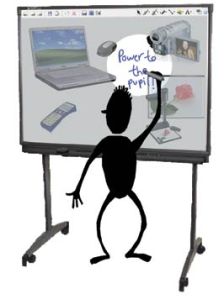
(image retrieved from http://chris.pirillo.com/what-would-you-invent/)
This Tuesday (October 22nd) due to internet disconnection in my room, I was not able to attend the online course. Later I checked out the recorded session and felt very lucky to have watched the video because the topic was very interesting to me. In this online session, Sylvia talked about how kids learn by inventing and building things, and how the tools such as MaKey MaKey make a great combination of technology, engineering and design, and allow for both fun and learning take place at the same time.
Prior to this class, I have never heard of MaKey MaKey. I googled it and found so many interesting stuff coming out. To me, MaKey MaKey is like a bridge that links technology with materials and stuffs we use and see in daily life which seem to have no direct relation with technology at all. It makes a big change of our life, just thinking about the example illustrated on the website that bananas become the piano keys.
The fact that kids can play, experiment, and explore with these types of tools makes learning even more appealing to them. Here learning is not only about reading books, listening to lectures, or doing homework. It is about kids making projects, designing things and learning from those hands-on activities. I think it is more of an authentic way of learning because it also allows for them to learn from messing things up or making mistakes, as often happens in our everyday life.
I also found this blog which talks about using MaKey MaKey in classroom to develop children’s multiple intelligences (logical/mathematical, musical/rhythmic, bodily/kinesthetic, and visual/spatial intelligences). It seems that MaKey MaKey is very beneficial to student learning. My questions are: is it widely available for students in schools today? Does it also have potential to strengthen other intelligences such as linguistic and interpersonal intelligences?





